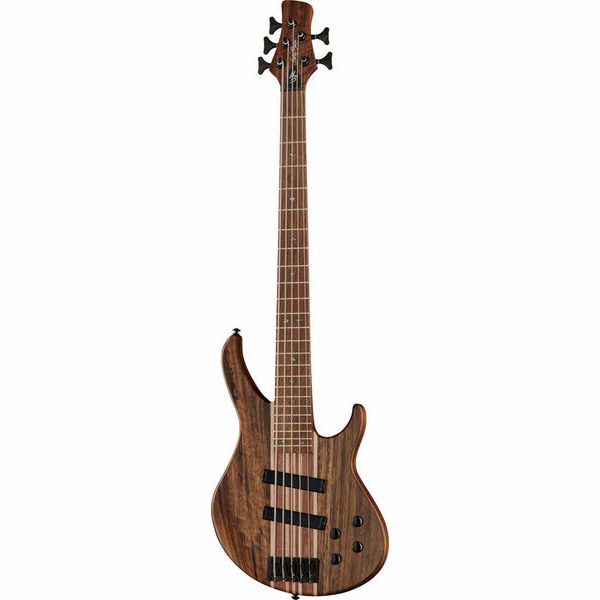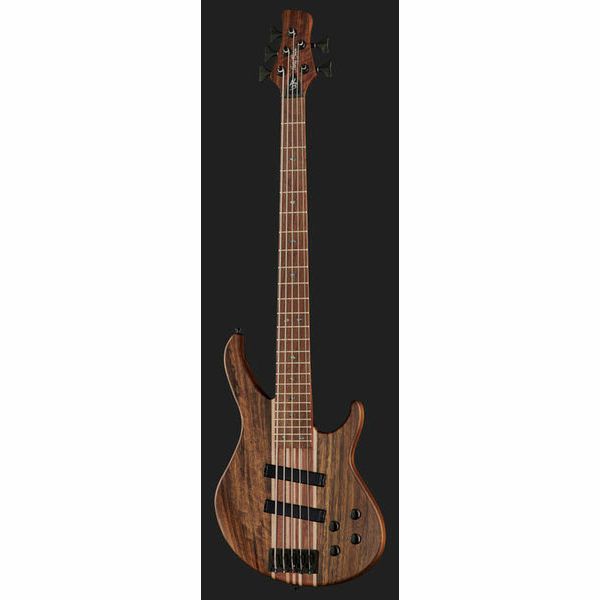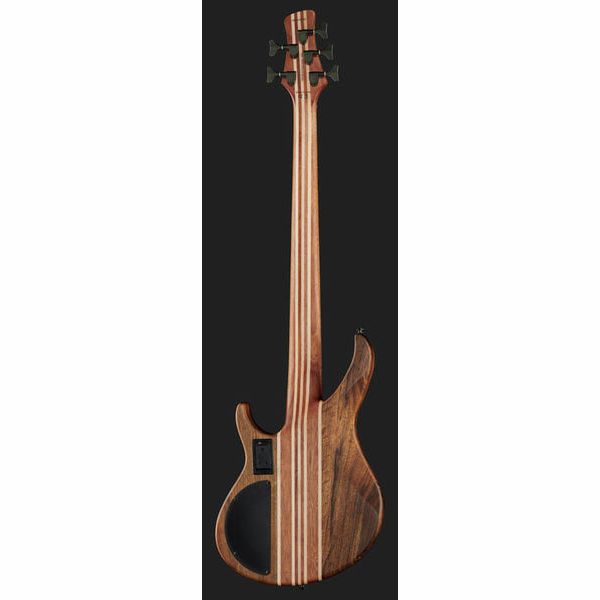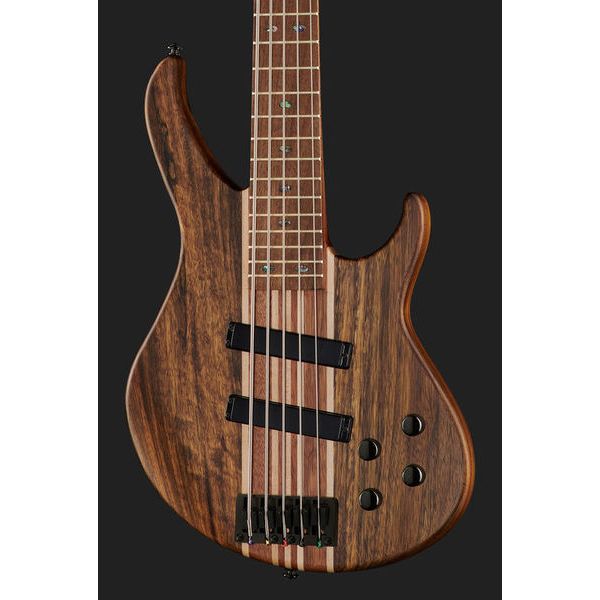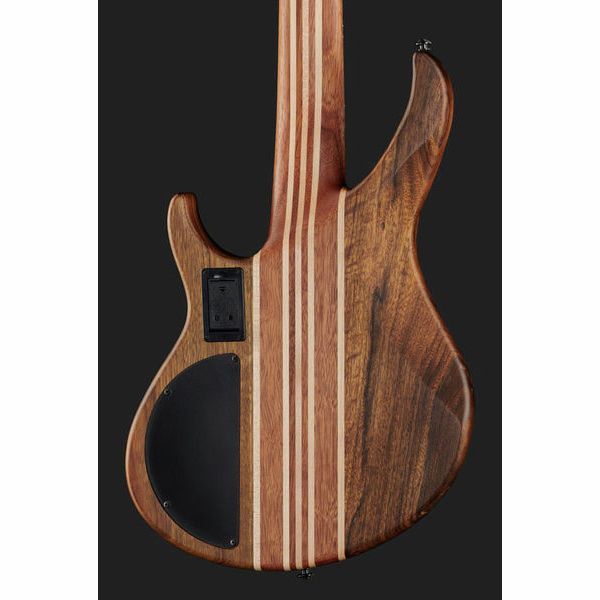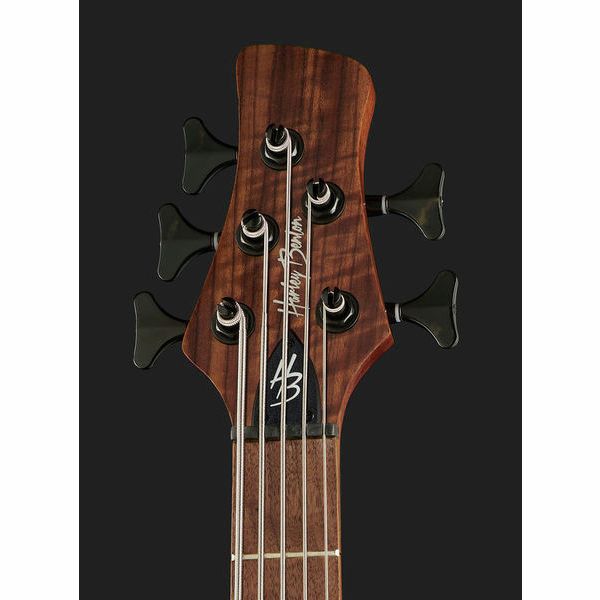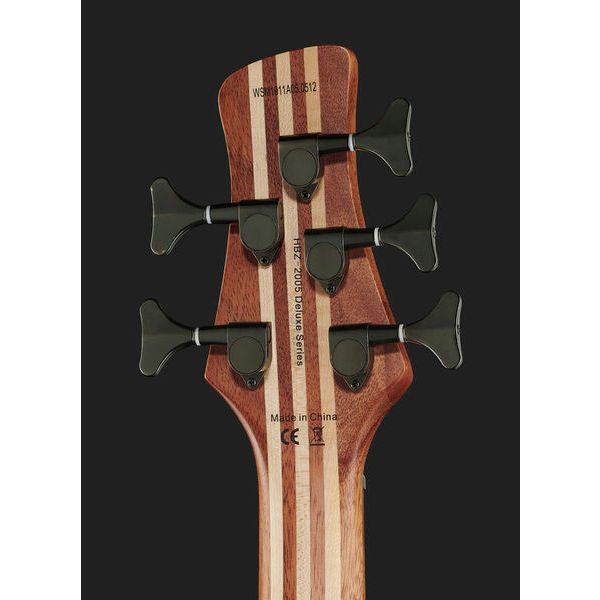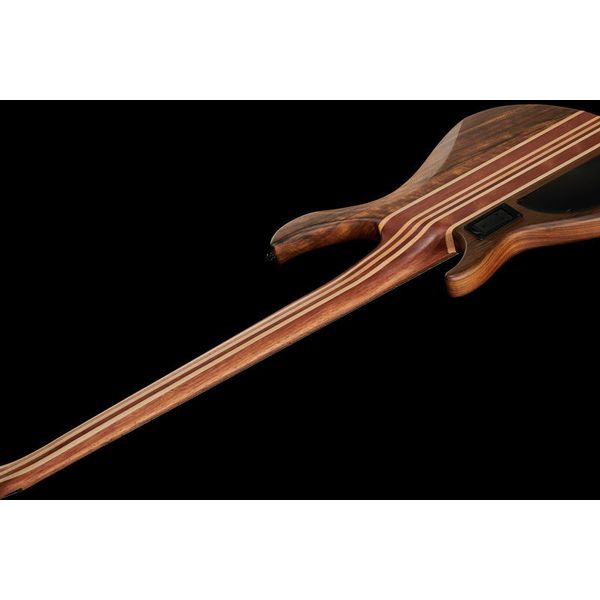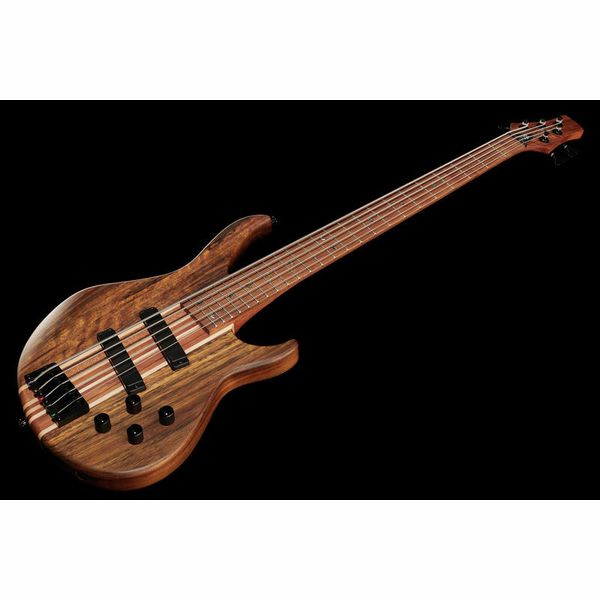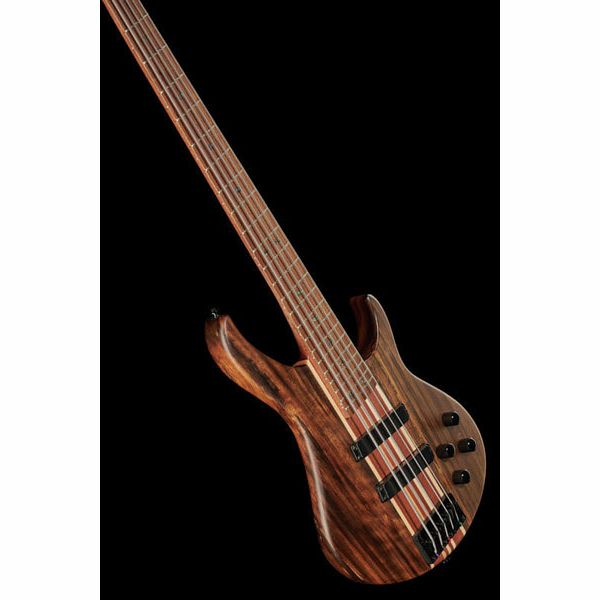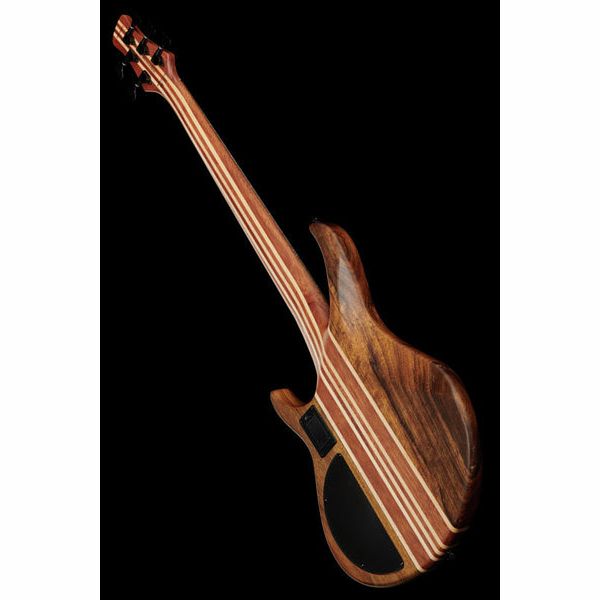Plus points:
Thomann's excellent customer service. The first example I had was an escapee from quality control and had to be replaced. This was done quickly, and with a very helpful attitude. The second example, the one I have kept, needed a little remedial soldering to fix a broken connection.
It's a beautiful looking thing, better in the flesh than in the photographs. The combination of woods works well. It is cosmetically very attractive.
Very little, if any set up will be required. The neck pick-up is arguably a little low and the truss rod will need a little tweak as the neck is not quite concave enough. This is not a big deal, I've have had to adjust the truss rod on just about every guitar I have ever owned. The action is never going to be as good as more expensive bass, but it's good enough.
D'Addario strings. Apparently not everyone's cup of tea, but they are the brand I currently favour, so I won't be changing them, except for another set of D'Addarios when they wear out.
Smooth operating control knobs that have a very subtle but definite centre notch (not the volume control).
Reasonably quiet electronics to begin with. After three months I am replacing them with an after market active circuit.
Very good tonal range, as you would expect from an active bass ? have a listen to the samples on the Thomann site. I have seen reviewers grumble that the bass is not as deep as more expensive basses, or that the treble is not as bright. To which I would say, maybe, but learn how to play the thing. There's plenty there. More than enough for an introduction to 5 string bassery.
The through neck is obviously wider than a 4 string, and the strings are slightly closer spaced. It is, however, pleasant to play.
The balance is good. I don't find it heavy (try a Rickenbacker if you want to hurt your shoulder!)
The machine heads are precise and seem rather better quality than I had expected.
There is no significant fret buzz anywhere, although the action is medium rather than low.
Minus points:
The first example had a body in three pieces. The lower part of the bottom wing was a separate piece of mahogany. The joint was solid, but inevitably you could see where the grain changed. My current example of this model has single piece wings.
The bridge pieces are individual for each string, and not quite perfectly aligned across the guitar. They were differently misaligned on the first example I had, it looks like the manufacturers just can't get it right. I doesn't matter other than visually. The bridge pieces are steel. I can't help feeling it would have been better to have a billet bridge and tailpiece.
There is no instruction sheet - you have to work out what the controls do - volume, balance and two tone controls.
For me, the lack of a thumb rest is a big deal. Luckily I had some hardwood spare and have made my own.
Conclusion:
My experience of Harley Benton instruments is that they are of noticeably cheap construction on close inspection, obviously nowhere near the quality of a major brand instrument, but sound unexpectedly good and play unexpectedly well. This is the cheapest bass I have ever owned by a significant margin. That it is so capable for less than £200 is an indicator of how much better cheaper instruments are these days. So for a first dabble with 5 strings my immediate reaction is that really, for so little money, you can't go wrong, but don't expect to fall in love with it.
I play quite forcefully with the middle cut. Through the Hartke A100 this bass really growls ? I like it. The acid test is would I use this bass live? The answer is yes, I would, but I'd still stick with my Hohners as my main instruments.
Rated as good overall despite some drawbacks, simply because it is very good value for money.



